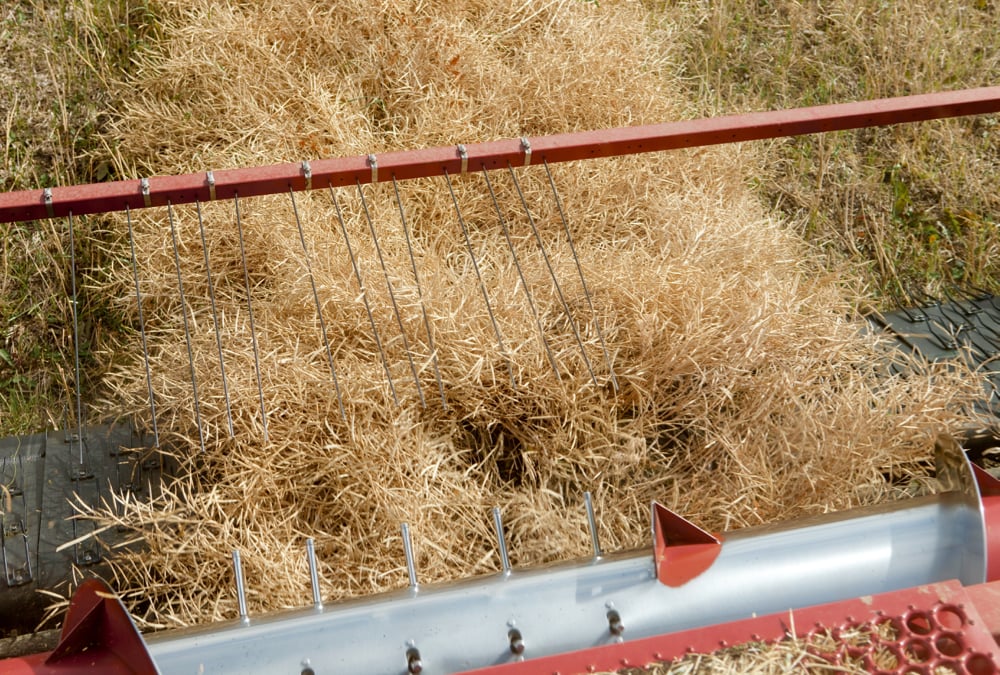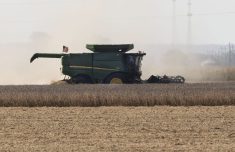The Canadian Grain Commission is going ahead with a plan to reclassify 25 varieties in the Canada Western Red Spring wheat class.
The commission announced July 29 that 25 CWRS varieties, including Lillian, Unity, Harvest and Kane, will be reclassified Aug. 1, 2017.
The decision was based on consultations with domestic and international stakeholders, including end users who had raised concerns that gluten strength in the CWRS class was no longer meeting expectations.
Four Canada Prairie Spring Red (CPSR) varieties will also be reclassified and other varieties will also be subject to a review and potential reclassification ruling beginning next year.
Read Also

Alberta harvest wrapping up: report
Harvest operations advanced to 96 per cent complete in Alberta as of Oct. 7, with only a few late-seeded cereal and canola fields remaining, according to the latest provincial crop report.
The commission has yet to determine if the affected varieties will be placed into an existing wheat class or if a new lower quality milling wheat class will be created to accommodate the demoted varieties.
“That really hasn’t been determined yet,” said Daryl Beswitherick, the commission’s manager of quality assurance standards.
“That is still under discussion with the industry to determine whether there is a need for a new wheat class or not.”
Either way, the varieties that are slated for reclassification are likely to command a lower market price beginning in the 2017-18 crop year.
Commercial growers who produce the varieties will still be able to market their grain in the CWRS class until July 31, 2017.
Wheat groups that participated in reclassification discussions with the grain commission were expecting it to move ahead with plans to tighten gluten strength parameters in the CWRS class and reclassify a handful of varieties.
However, the number of affected CWRS cultivars came as a surprise.
“It took us a little bit by surprise, the sheer number that they are considering,” said Tom Steve, general manager of the Alberta Wheat Commission.
“This is a much larger bucket of varieties … than we had originally been discussing in the consultations.”
The Alberta commission suggested during consultations that some of the more popular CWRS varieties subject to review should remain in the red spring class and be allowed to run their course in the market until acreages diminished gradually.
As it stands, the grain commission decision will likely pressure some wheat growers to switch varieties and buy new CWRS genetics within the next two years.
In addition, the unresolved question about whether the grain commission will create a new class of milling wheat is also a concern to growers, Steve said.
There is no evidence to suggest that a new milling class of milling wheat will provide a financial benefit to western Canadian wheat growers or if it will simply result in a lower value wheat class that involves additional segregation costs, he said.
“We don’t support the establishment of a new milling class at this time because we haven’t seen evidence of the value it would provide to farmers,” Steve said.
“We all support efforts aimed at maintaining our reputation for quality and consistency, but I think where we sometimes differ is on how best to get there.”
According to the commission’s website, the CWRS varieties already scheduled for reclassification include AC Abbey, AC Cora, AC Estonia, AC Majestic, AC Michael, AC Minto, Alvena, Alikat, CDC Makwa, CDC Osler, Columbus, Conway, Harvest, Kane, Katepwa, Leader, Lillian, McKenzie, Neepawa, Park, Pasqua, Pembina, Thatcher, Unity and 5603HR.
Affected CPSR varieties include AC Foremost, AC Taber, Conquer and Oslo.
Of the varieties slated for reclassification, Unity, Harvest, Lillian and Kane are by far the most popular among western Canadian growers.
As recently as 2011, the four varieties accounted for close to 50 percent of CWRS acres planted on the Prairies.
Beswitherick said commercial wheat growers who grew those varieties have been gradually migrating toward other CWRS cultivars during the past few years.
Unity, Harvest and Lillian accounted for 25 percent of prairie-wide CWRS acreage last year, he said.
The reclassification is intended to narrow the range of gluten strength parameters within the CWRS class, establishing Carberry as a the lower threshold for gluten strength and Glenn for the upper threshold.
brian.cross@producer.com

















